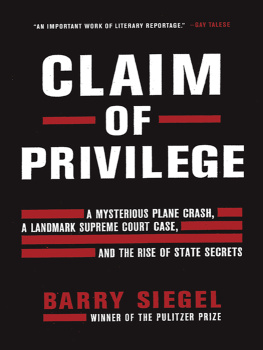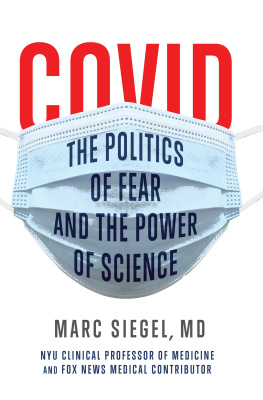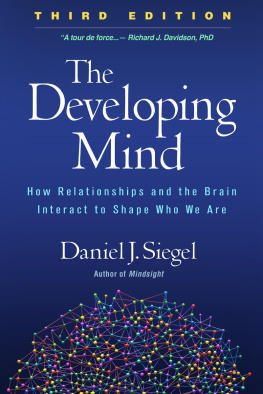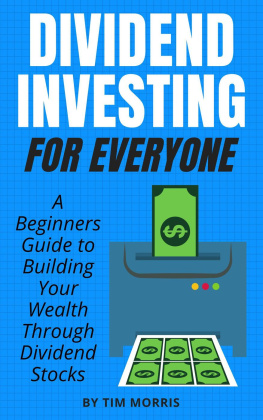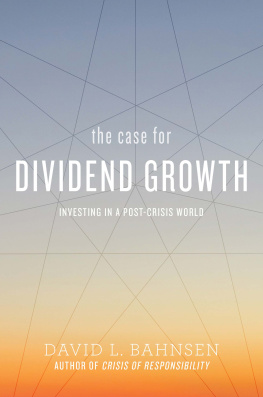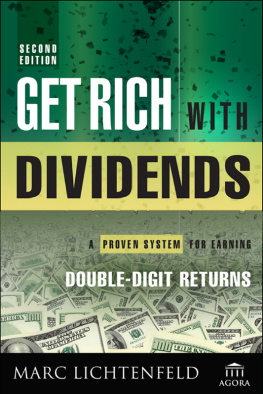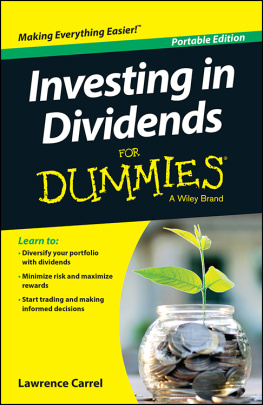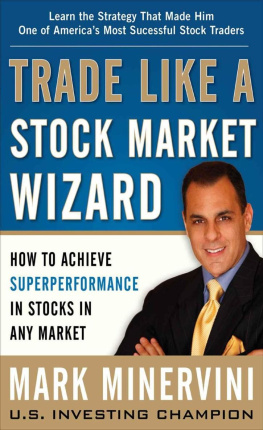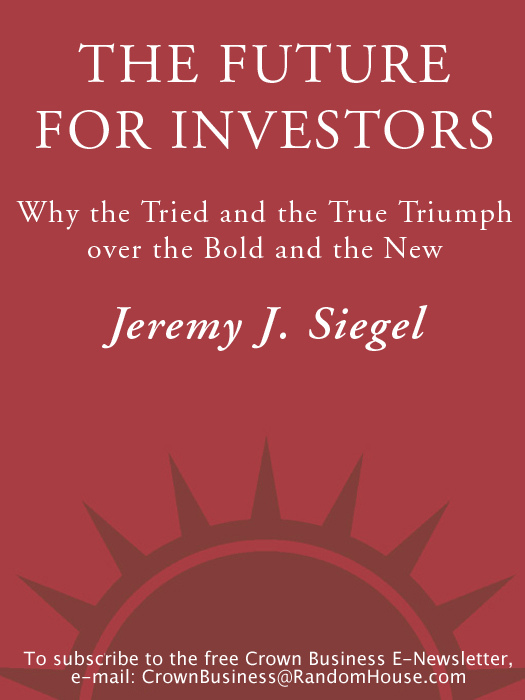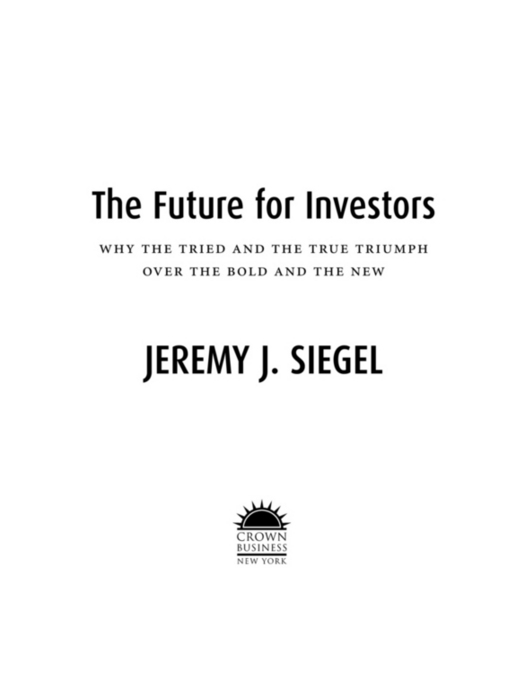ALSO BY JEREMY J. SIEGEL
Stocks for the Long Run
Copyright 2005 by Jeremy J. Siegel
All rights reserved.
Published in the United States by Crown Business,
an imprint of the Crown Publishing Group,
a division of Random House, Inc., New York.
www.crownpublishing.com
CROWN BUSINESS is a trademark and the Rising Sun colophon
is a registered trademark of Random House, Inc.
Library of Congress Cataloging-in-Publication Data
Siegel, Jeremy J.
The future for investors: why the tried and the true triumph
over the bold and the new / Jeremy J. Siegel.1st ed.
1. Stocks. 2. StocksHistory. 3. Rate of return.
4. StocksRate of return. I. Title.
HG 4661.S52 2005
332.6322dc22 2004022938
eISBN: 978-0-307-23664-7
v3.1
To Paul Samuelson, my teacher, and
Milton Friedman, my mentor, colleague, and friend.
CONTENTS
Three: The Tried and True:
Finding Corporate El Dorados
Four: Growth Is Not Return:
The Trap of Investing in High-Growth Sectors
Five: The Bubble Trap:
How to Spot and Avoid Market Euphoria
Six: Investing in the Newest of the New:
Initial Public Offerings
Seven: Capital Pigs:
Technology as Productivity Creator and Value Destroyer
Eight: Productivity and Profits:
Winning Managements in Losing Industries
Nine: Show Me the Money:
Dividends, Stock Returns, and Corporate Governance
Ten: Reinvested Dividends:
The Bear Market Protector and Return Accelerator
Eleven: Earnings:
The Basic Source of Shareholder Returns
Twelve: Is the Past Prologue?
The Past and Future Case for Stocks
Thirteen: The Future That Cannot Be Changed:
The Coming Age Wave
Fourteen: Conquering the Age Wave:
Which Policies Will Work and Which Wont
Fifteen: The Global Solution:
The True New Economy
Seventeen: Strategies for the Future:
The D-I-V Directives
Appendix: The Complete Corporate History and
Returns of the Original S&P 500 Firms
PREFACE
My first book, Stocks for the Long Run, was published in 1994 when the U.S. market was midway through its longest and strongest bull market in history. My research showed that over extended periods of time, stock returns not only dominate the returns on fixed-income assets, but they do so with lower risk when inflation is taken into account. These findings established that stocks should be the cornerstone of all long-term investors portfolios.
The books popularity led to many speaking engagements before audiences of individual and professional investors. After my presentations, two questions invariably came up: Which stocks should I hold for the long run? and What will happen to my portfolio when the baby boomers retire and begin liquidating their portfolios?
I wrote The Future for Investors to answer these questions.
The Great Bull Market of the 1990s
In Stocks for the Long Run, I recommended that investors link the equity portion of their portfolio to broad-based indexes of stocks, such as the S&P 500 Index or the Wilshire 5000. I had seen so many investors succumb to the temptation of trying to time the ups and downs of the market cycle that I believed a simple, disciplined, indexed approach was the best strategy. I did discuss some techniques that might improve on these indexed returns, but these suggestions were never central to the major thesis of the book.
Although indexation was a very good strategy for investors in the 1990s, by the end of the decade I became increasingly uncomfortable with the valuations that were put on many stocks. I thought frequently of what Paul Samuelson, my graduate school mentor and first American Nobel prize winner in economics, wrote on the cover of Stocks for the Long Run:
Jeremy Siegel makes a persuasive case for a long-run, buy-and-hold investment strategy. Read it. Profit from it. And when short-run storms rock your ship, sleep well from a rational conviction that you have done the prudent thing. And if you are a practitioner of economic science like me, ponder as to when this new philosophy of prudence will self-destruct after Siegels readers come some day to be universally imitated.
When he wrote this in 1993, stock valuations were near their historical averages, and there was little danger that the market would self-destruct. But as the Dow Industrials crossed 10,000, and Nasdaq approached 5,000, stock prices relative to either earnings or dividends climbed to higher levels than they had ever reached before. I worried that stock prices had reached heights from which they would yield poor returns. It was tempting to urge investors to sell and wait for prices to come back down before going back into stocks.
But when I investigated the market in depth, I found that overvaluation infected only one sectortechnology; the rest of the stocks were not unreasonably priced relative to their earnings. In April of 1999, I took a stand on the pricing of Internet stocks by publishing an op-ed piece in the Wall Street Journal entitled Are Internet Stocks Overpriced? Are They Ever! It was my first public warning about market valuations.
Shortly before that article appeared, I invited Warren Buffett to speak before the Wharton community. He had not been on campus since he left the Wharton undergraduate program in 1949. He spoke to an overflowing crowd of more than one thousand students, many of whom had waited hours in line to get an opportunity to hear his wisdom on stocks, the economy, and whatever else was on his mind.
I introduced Warren to the audience and detailed his extraordinary investment record. I was particularly honored when, in response to a question about Internet stocks, he urged the audience to read my Journal piece that had been published just a few days earlier.
His encouragement persuaded me to look deeper into the technology stocks that were selling at unprecedented valuations. At that time, technology stocks were all the rage and not only had the market value of the technology sector reached almost one third of the entire S&P 500s market value, but trading volume on Nasdaq for the first time in history eclipsed that on the New York Stock Exchange. I penned another article for the Journal in March 2000 entitled Big Cap Tech Stocks Are a Suckers Bet. I argued that stocks such as Cisco, AOL, Sun Microsystems, JDS Uniphase, Nortel, and others could not sustain their high prices and were heading for a severe decline.
If investors had avoided technology stocks during the bubble, their portfolios would have held up very well during the bear market. Indeed, the cumulative return of the 422 stocks in the S&P 500 Index that are not in the technology sector is higher than it was at the market peak in March 2000.
Long-term Performance of Individual Stocks
My interest in the long-term returns of individual stocks was piqued by the experience of one of my close friends, whose father had purchased AT&T fifty years earlier, reinvested the dividends, and held all the firms spun-off from Ma Bell. A modest initial investment had turned into a substantial bequest.


